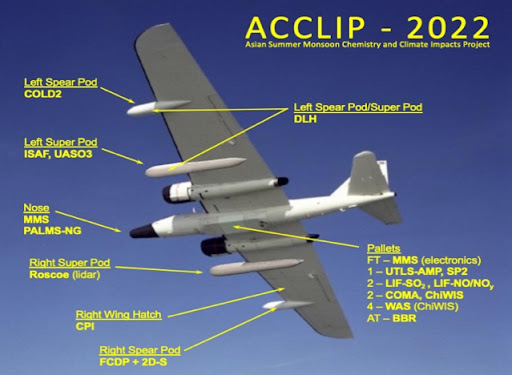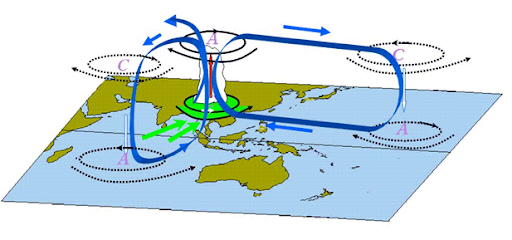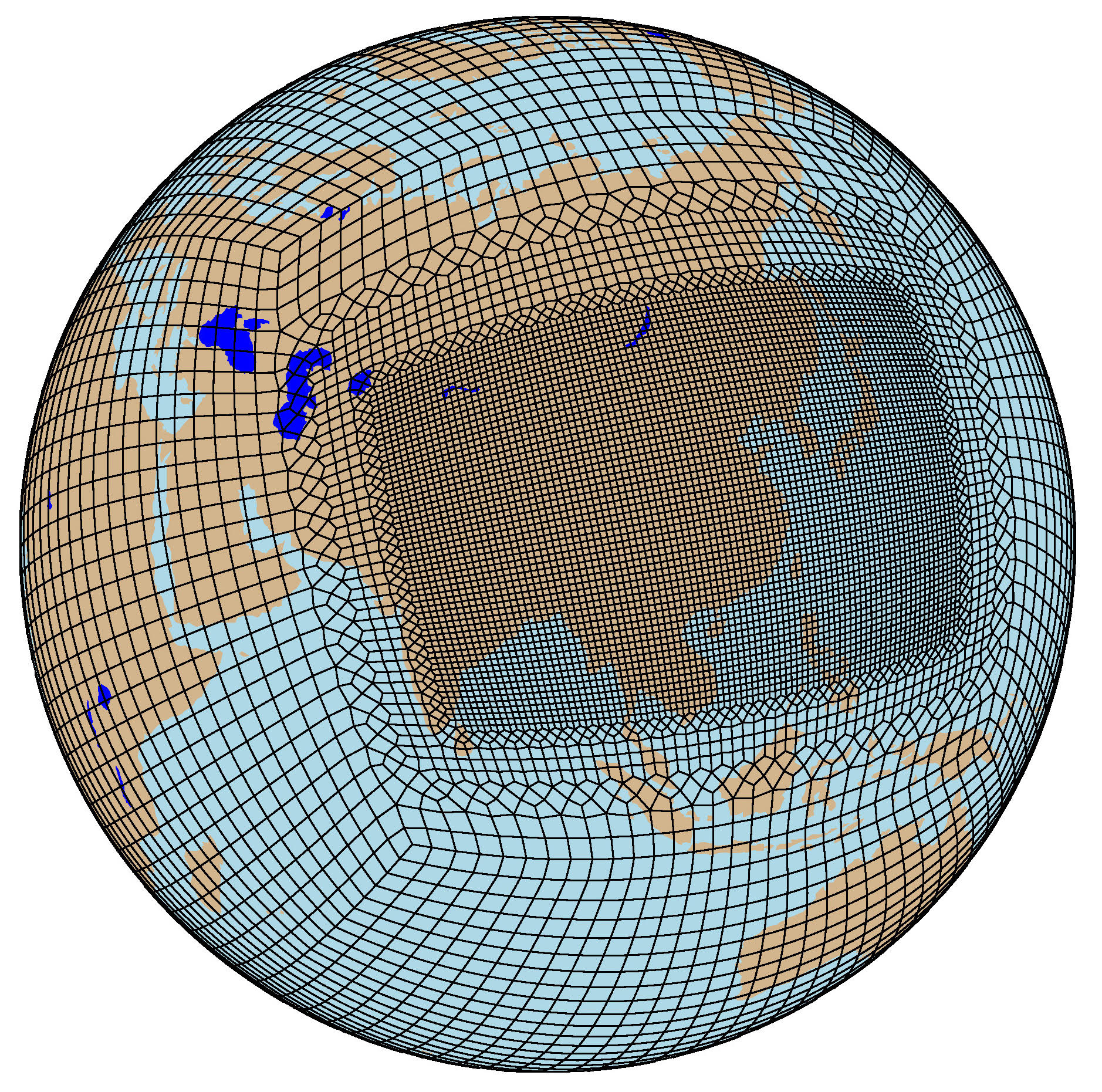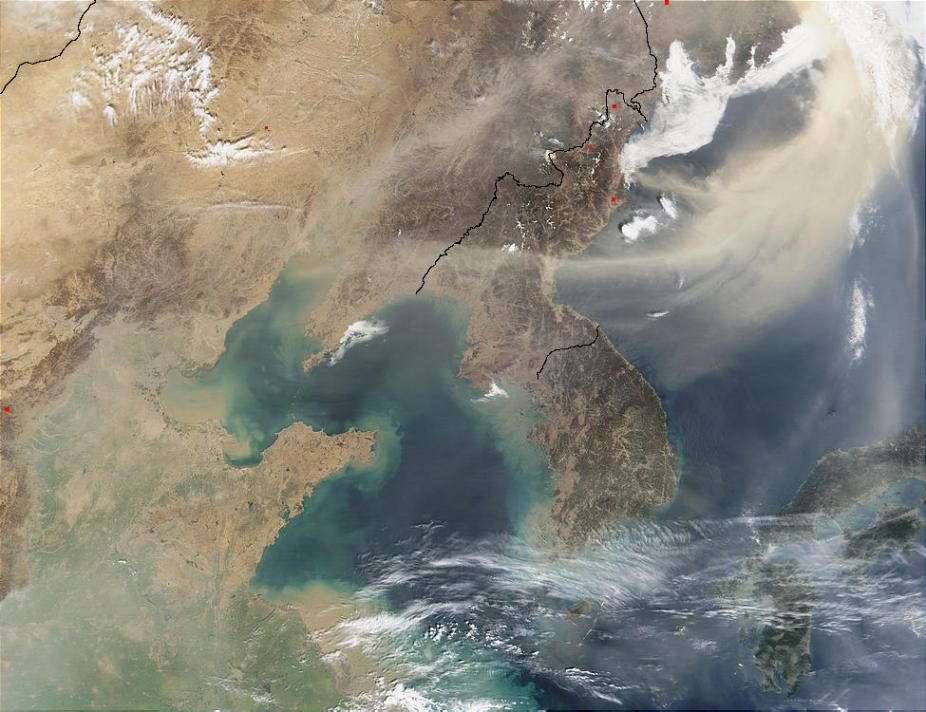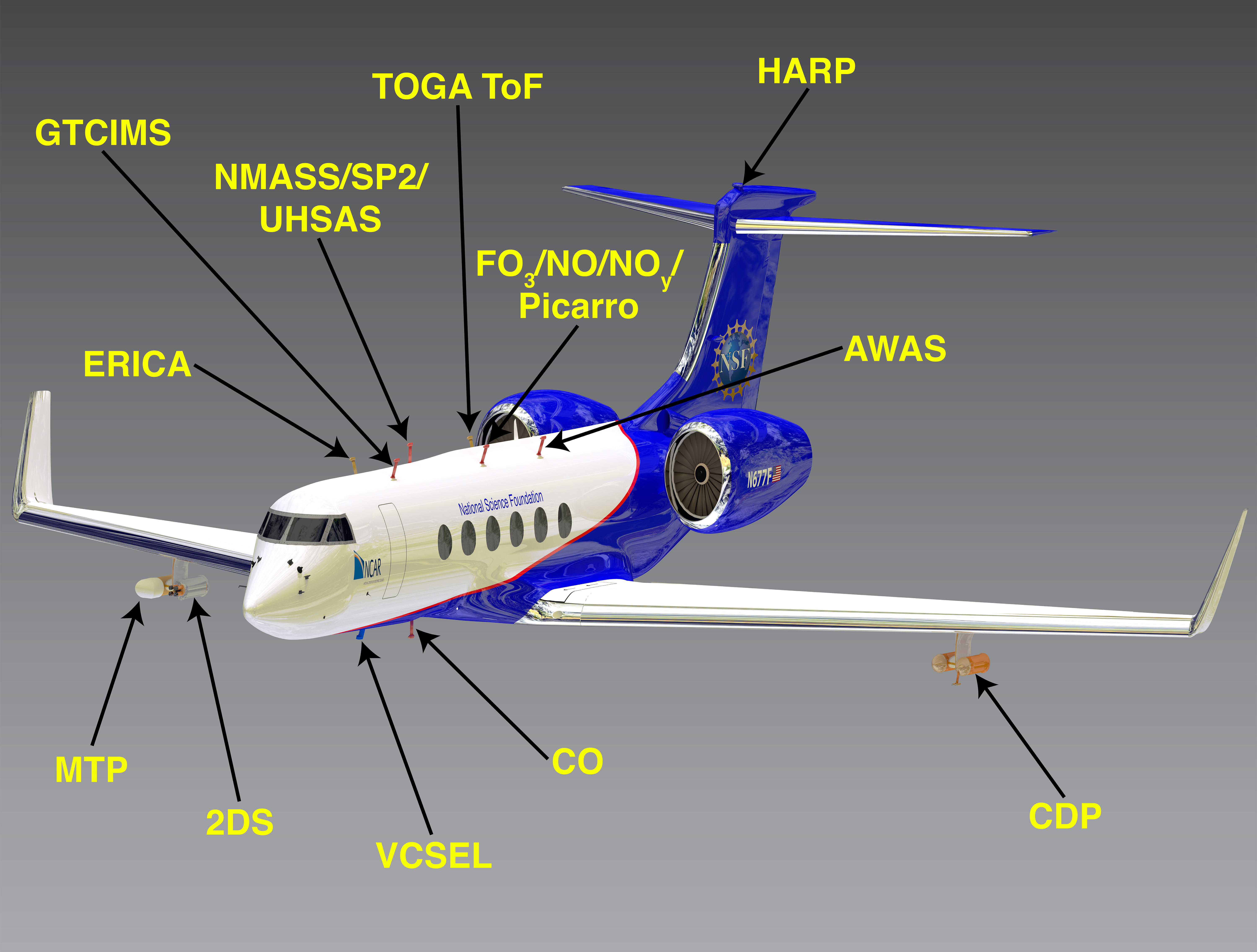What is ACCLIP?
|
Impact of the Asian Summer Monsoon on the Composition of the Upper Troposphere and Lower Stratosphere (UTLS)
|
The Asian Summer Monsoon Chemical & CLimate Impact Project (ACCLIP) is a research study being done jointly between the National Center for Atmospheric Research (NCAR) and the National Aeronautics and Space Administration (NASA).
ACCLIP's goals are to enhance the understanding of the impacts of Asian gas and aerosol emissions on global chemistry and climate through the Asian Summer Monsoon (ASM) and its large-scale dynamics.
Researchers from both organizations are based in South Korea from late July to early September to conduct research operations from 2 – 29 August 2022. Over this region, the Asian summer monsoon transports a high concentration of pollution that is later distributed throughout the globe, where it may have profound impacts on atmospheric composition.
ACCLIP’s Flying Laboratories
 “Flying laboratories” are used to collect measurements for ACCLIP. The NSF/NCAR Gulfstream V (GV) research aircraft will conduct a series of mid-altitude flights from the project base located at the Osan Air Force Base in South Korea.
“Flying laboratories” are used to collect measurements for ACCLIP. The NSF/NCAR Gulfstream V (GV) research aircraft will conduct a series of mid-altitude flights from the project base located at the Osan Air Force Base in South Korea.
 NASA will operate its high-altitude WB-57 from the same location and fly complimentary tracks, collecting data while in flight.
NASA will operate its high-altitude WB-57 from the same location and fly complimentary tracks, collecting data while in flight.
The NSF/NCAR GV and the WB-57 will span the marine boundary layer to the tropical lower-stratosphere, providing unprecedented details of the Asian atmosphere composition.
Learn more about the ACCLIP payload on the NSF/NCAR GV.
The Asian Summer Monsoon and Pollution Transportation
The Asian Summer Monsoon (ASM) is a seasonal weather pattern of rain and winds over South Asia and other areas worldwide. Temperature differences between the East Asian continent and the Pacific Ocean drive the seasonal fluctuations of the ASM and create an extensive air mass that circulates over Asia. Gases and particles enter this massive circulation which transports them to other parts of the atmosphere. Since the inception of the NASA Earth-observing satellites, scientists have observed that the ASM “pumps” significant amounts of surface air that contains pollutants and aerosols to other areas of the atmosphere. From there, the pollutants are transported more widely, which are being studied by ACCLIP.
Learn more about monsoons, air quality, and the instruments used to measure clouds, airborne particles, and trace gases.
What are the societal benefits of ACCLIP?
Scientists have long been interested in vertical lofting and global distribution of atmospheric gases produced naturally and by humans, and the chemical fate of these compounds as they decompose in the upper troposphere and lower stratosphere.
ASM-induced convection, together with chemical processing in the surface layer of the atmosphere, impact the chemicals and particles that enter the stratosphere, the layer of the atmosphere that contains the ozone layer, and other climate change controls. Understanding these processes will improve modeling simulations of interactions between atmospheric composition, ozone depletion, and climate change.
Collaborative Research
ACCLIP is a collaborative research program bringing together more than 30 research centers and universities from around the world. U.S. funding agencies include the National Science Foundation (NSF), the National Aeronautics and Space Administration (NASA), the National Oceanic and Atmospheric Administration (NOAA), and the Office of Naval Research (ONR).
Learn more about the ACCLIP Science Team.
ACCLIP Project Manager Data Quality Report
Third ACCLIP Science Team Meeting (202211)
Second ACCLIP Science Team Meeting (202201)

